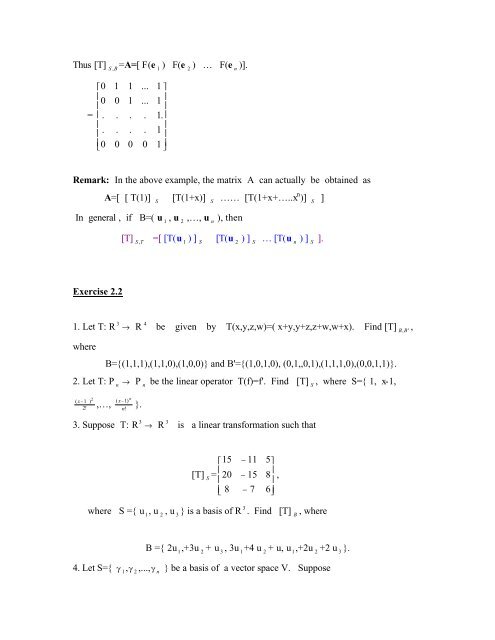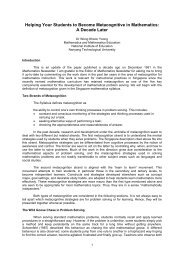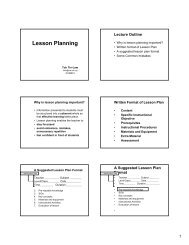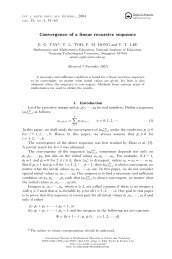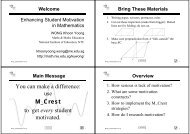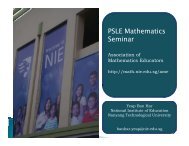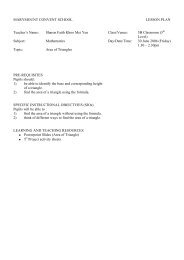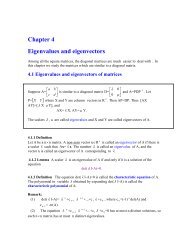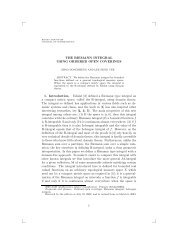Chapter 3 Linear transformations
Chapter 3 Linear transformations
Chapter 3 Linear transformations
You also want an ePaper? Increase the reach of your titles
YUMPU automatically turns print PDFs into web optimized ePapers that Google loves.
Thus [T]S, B=A=[ F(e 1) F(e 2) … F(e n)].=⎡⎢⎢⎢⎢⎢⎢⎣00..010..011..0........011⎤⎥⎥⎥⎥⎥⎥⎦1.11Remark: In the above example, the matrix A can actually be obtained asA=[ [ T(1)] S[T(1+x)] S…… [T(1+x+…..x n )] S]In general , if B=( u 1, u 2,…, u n), then[T]S, T=[ [T(u 1) ] S[T(u 2) ] S… [T(u n) ] S].Exercise 2.21. Let T: R 3 → R 4 be given by T(x,y,z,w)=( x+y,y+z,z+w,w+x). Find [T]B ,B ',whereB={(1,1,1),(1,1,0),(1,0,0)} and B'={(1,0,1,0), (0,1,,0,1),(1,1,1,0),(0,0,1,1)}.2. Let T: P n→ P nbe the linear operator T(f)=f'. Find [T] S, where S={ 1, x-1,2( x −1)2!( x −,…,n!n1)}.3. Suppose T: R 3 → R 3 is a linear transformation such that[T] S=⎡⎢⎢⎢⎣15208−−−11157586⎤⎥⎥⎥⎦,where S ={ u 1, u 2, u 3} is a basis of R 3 . Find [T] B, whereB ={ 2u 1,+3u 2+ u 3, 3u 1+4 u 2+ u, u 1,+2u 2+2 u 3}.4. Let S={ g1, g2,...,gn} be a basis of a vector space V. Suppose


